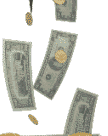 |
| Using Stockcharts.com is like legal stealing! |
I am not an expert at technical analysis, but I plan to be one or at least increase my knowledge of technical analysis in the years to come. While learning about technical analysis I have found that it is essential to have Stockcharts.com pulled up on the computer so that I can use at it as a reference and learning tool. Stockcharts.com is free and has detailed customizations that you can use when learning about technical analysis. EMA, SMA, MACD, OHLC bars, Candlesticks, it is all here for the most part. Of course you change the duration of the time periods that you want to view on the chart.
Stockcharts.com also has great articles and information on technical and fundamental analysis. If you click on the 'Chart School' tab you are taken to a portal that will give you a multitude of articles about technical analysis. I looked through these articles quickly and found that they have great illustrations to go along with the written content.
I have read some of the blogs from the 'Blogs' tab on Stockcharts.com and found that they were informative and had great chart illustrations. I have enjoyed the content that I found in the blogs section of the site.
There are sparse advertisements on Stockcharts.com, a huge plus. Nothing pops up on me when I am viewing the content on this site. Ad pop ups on websites make me want to slap kittens in the face.
There is also content available for paying members that includes more customization options and a membership to the site. I do not need these extra customizations at this time, but if I ever do need them, Stockcharts.com will be the first place that I sign up for these services on. I feel like I should already be paying them for the content they provide for free anyway; no one tell them that though!
Overall I give Stockcharts.com an A. I can't think of any draw backs to this site. It has great charts, chart information and technical analysis education, mostly for free. I highly recommend visiting the site. You would think that I was on the Stockcharts.com payroll. I'm not though, the site is just that great! I have supplied the link below. VISIT IT NOW! If you need to view some stock charts that is.
Link for article http://stockcharts.com/






















